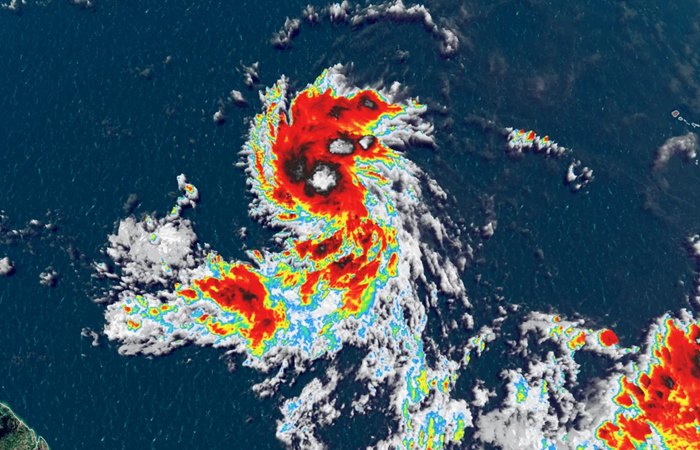
Hurricane Lee 2023 – A recently formed tropical depression within the Atlantic Ocean appears poised to intensify, potentially evolving into a named storm and eventually reaching a formidable Category 4 hurricane, just as the hurricane season reaches its customary peak in early September.
This new weather system, known as Tropical Depression 13, emerged on Tuesday morning in the central tropical Atlantic, situated nearly 1,000 miles west-southwest of the Cabo Verde Islands, as reported by the National Hurricane Center.
Forecasts indicate that the depression is likely to elevate to tropical storm status later today, at which point it will be designated “Lee.”
Over the course of this week, the depression is anticipated to progress steadily west-northwestward, entering regions increasingly conducive to strengthening. These conditions entail abundant moisture, low wind shear, and anomalously warm waters, spanning the majority of the projected path for this potential cyclone.
Remarkably, the National Hurricane Center’s storm discussion indicates an unusually strong initial intensity forecast, although it remains below the consensus of intensity predictions. Nevertheless, all indicators suggest that the depression will evolve into a potent hurricane by the end of the forecast period.
The system is expected to reach hurricane status as early as Thursday and would mark the fourth hurricane of the season, following Don, Franklin, and Idalia. Furthermore, it is forecasted to undergo substantial strengthening by the weekend, potentially becoming the third Category 3 or higher hurricane of the season as the weekend approaches.
ALSO SEE: Jaycie Nicole Biography, Career, Age, Parents and Net Worth
Its trajectory is predicted to be generally west-northwestward across the tropical Atlantic, extending throughout the week, with a close approach to the Leeward Islands as a hurricane during the weekend.
Any deviations in its path as it nears the islands could potentially amplify its impact in those areas and beyond. Consequently, residents in the eastern Caribbean, including the Leeward Islands, Puerto Rico, Hispaniola, and the Bahamas, are advised to closely monitor the evolving weather forecasts.
While it is presently too early to definitively ascertain whether this weather system will directly affect the U.S. mainland, even if it remains offshore, it has the potential to generate dangerous surf conditions and rip currents that may once again pose a threat to the East Coast. Notably, there was a fatality resulting from a rip current incident in New Jersey over the Labor Day weekend.
